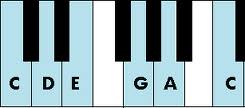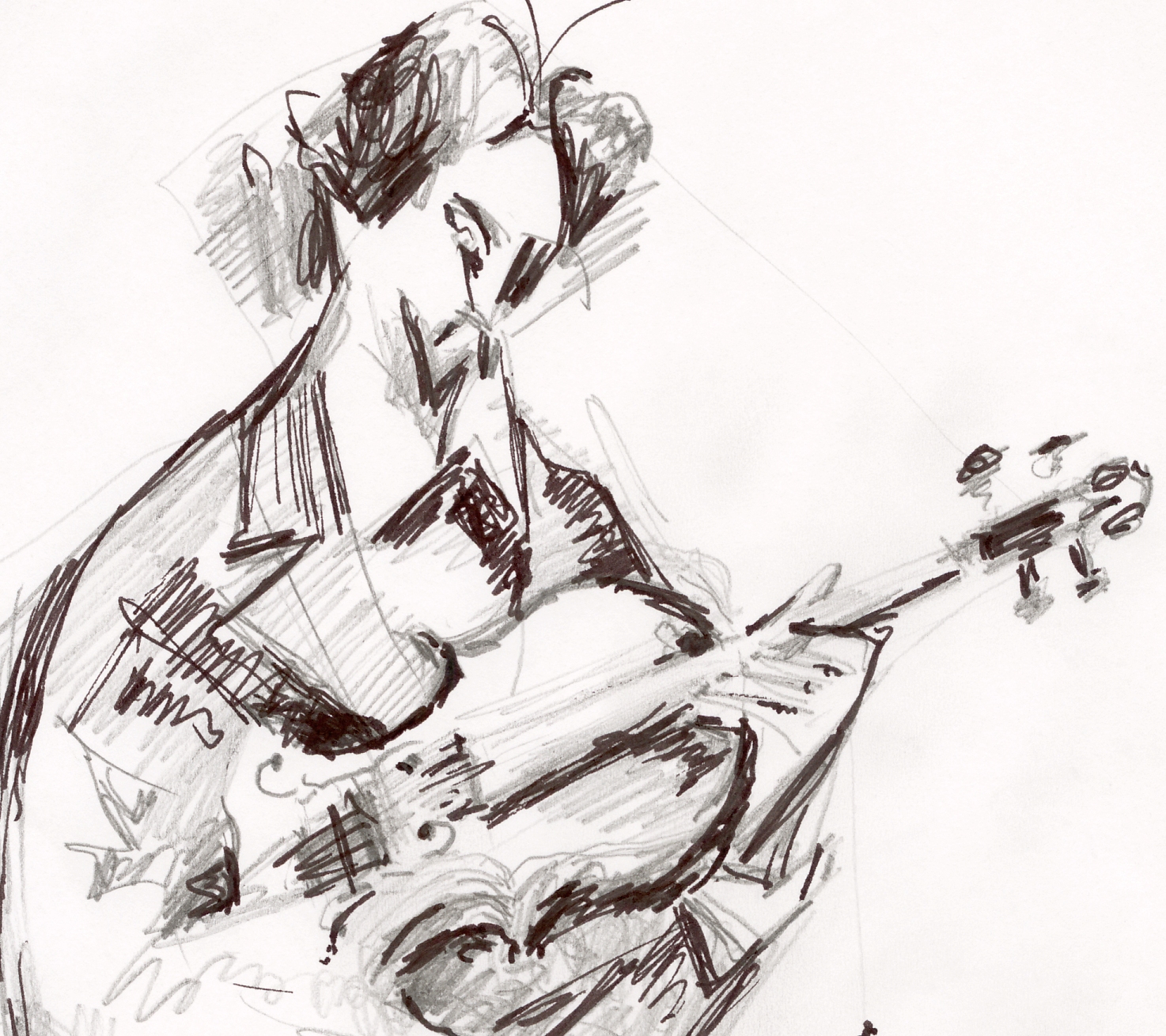The major pentatonic scale: Tips on how to use it
 This session is a short introduction to the major pentatonic scale. This scale is widely used by musicians all over the world, so it deserves our attention early in our sessions. Pentatonic scales are made of 5 different notes and are extremely useful and interesting. This is because they seem to have an innate musical meaning and they tend to sound more as ‘real music’ compared to the heptatonic scale we have all heard and sung many times in our lives: C, D, E, F, G, A, B, C. Whatever musical style you are into, the simplicity, openness and inherent musicality of the major pentatonic scale will always enrich your playing.
This session is a short introduction to the major pentatonic scale. This scale is widely used by musicians all over the world, so it deserves our attention early in our sessions. Pentatonic scales are made of 5 different notes and are extremely useful and interesting. This is because they seem to have an innate musical meaning and they tend to sound more as ‘real music’ compared to the heptatonic scale we have all heard and sung many times in our lives: C, D, E, F, G, A, B, C. Whatever musical style you are into, the simplicity, openness and inherent musicality of the major pentatonic scale will always enrich your playing.
Its general formula is 1, 2, 3, 5, 6, supposing that the major pentatonic scale is named after the 1 note. The G major pentatonic scale then is G, A, B, D, E. Familiarize your left hand with the fingerings for all 12 major pentatonic scales. Ideally, you should learn to play the scale using the whole range of your instrument. If not, I would at least strongly recommend playing scales and arpeggios starting on the lowest note available. How high up on the E string you want to go depends on your intentions and stylistic needs.
Keep in mind that for every major pentatonic scale there is an equivalent scale called minor pentatonic built out of the same notes. The relative minor pentatonic scale is always found one and a half step lower than the root of the major one and its formula is 1, 3, 4, 5, 7. Once we learn the major pentatonic we immediately get the minor one for free. So when we say G major pentatonic (G, A, B, D, E) we also mean E minor pentatonic (E, G, A, B, D) and vice versa. It is basically up to us whether we’ll be thinking major or minor. Let’s agree that in this session we’ll be thinking major.
Tips on using the Major Pentatonic Scale
Suppose our guitar friend is playing a D major chord. A typical application of the major pentatonic scale is to play the scale building it on the root of the major chord, in this case D major pentatonic. Sounds like this:
Don’t forget that if the chord changes to Bm we can use the same scale. (D major pentatonic=Bm pentatonic)
We can use ideas and structures that are built on a different root than that of our chord we want to play on. One example is playing our scale 2 semitones lower than the root of the major chord. This is especially effective in modal tunes where the harmony moves to the major chord built on the 7th degree of the scale. When this happens we can play the same major pentatonic on both chords creating two different colours. Here is how the C major pentatonic scale sounds when our guitarist alternates between D and C major chords:
You can find a good example of this idea in mandolinist’s John Reischman Cd “Up in the Woods” in “Ponies in the forest”. This is a tune in D major where he is using sounds from the C major pentatonic scale (2 semitones lower than the root) on both D major (the 1 chord) and C major (the 7 chord). Let’s see our contribution to the harmony when we play C major pentatonic against a D major chord:
C note is the flat 7th. D note is the root. E note is the 9th. G note is the 4th. A note is the 5th. We can find this harmonic environment in many tunes like Salt Creek, Red hair boy and June apple.
Another use of the major pentatonic scale is on dominant chords, the third of the 3 big families of chords. Dominant chords are major chords with a flat 7th. Again, as in major chords you can play the scale building it on the root of our dominant chord. So if we had a D7 chord we can play the D major pentatonic scale. Although our scale does not provide the important 7th degree of the dominant chord (the note C), it is still a major scale and sounds fine. Another idea that works well within a jazz context is to play the major pentatonic scale whose root is one step lower that the root of the dominant chord-same thing we did with major chords. For example, on a E7 chord we could play D major pentatonic (D, E, F#, A, B). Here our contribution to the harmony is as follows:
D note is the flat 7th (good starting note…) E note is the root F# note is the 9th (nice to land on…) A note is the 4th B note is the 5th
I find this sounds better on dominant chords which do not resolve to the tonic (1 chord). But this is just me, so follow your own taste. When our dominant chord does resolve to the tonic (the 1 chord) in a 5-1 resolution, then we can basically use the major pentatonic scale built on the 1, on both 5 and 1 chords. So if our guitarist is playing D7 that leads to G major we can play G major pentatonic sounds on both chords. So, the beginning of the jazz standard Sweet Georgia Brown for example, follows this progression (in the key of G): E7-A7-D7-G. Now, let’s apply these 3 ideas. I ‘ll be playing-thinking D major pentatonic on E7 (one step below our root), A major pentatonic on A7 (typical application) and G major pentatonic on both D7 and G since D7 leads to the tonic key of G. You will listen to this progression twice. Sounds like this:
We can also use the major pentatonic scale to create a more bluesy colour. We can do that by playing the major pentatonic scale built one and a half step above a major chord root. For example if we are playing in G major environment we can play Bb major pentatonic. Our contribution then is:
Bb note is the flat 3rd C note is the 4th D note is the 5th F note is the flat 7th G note is the root.
Let’s apply this idea on a typical swing progression in the key of G. The progression in our example is Em-A7-D7-G6 and you will listen to it 4 times. I am going to treat all 4 chords as being in G major environment. In the beginning I am going to play some simple G major pentatonic material, and then I will play the Bb major pentatonic at the end. Listen to the blues effect:
Flat 3rd and 7th are typical blues notes. We provide them by playing Bb pentatonic on G major. The blues will be discussed in more detail in a future post.
These are a few suggestions on how to start using the major pentatonic scale. We need to keep in mind that what sounds nice to our ears is also a matter of context, judgement and interpretation. However, due to its inherent musical meaning the major pentatonic scale is an interesting area for experimentation in our pursuit for nice sounds. One way to look for these sounds is to spot an important harmony note or groups of notes (usually 3rds and 7ths, or extensions like 11#, 9, b9) and then see which pentatonic scales are these notes part of. The combination of emphasising these key notes, the inherent meaning of the scale and your taste will yield some good results.
Good Luck!
Watch this demonstration of the pentatonic scale by Bobby McFerrin.
